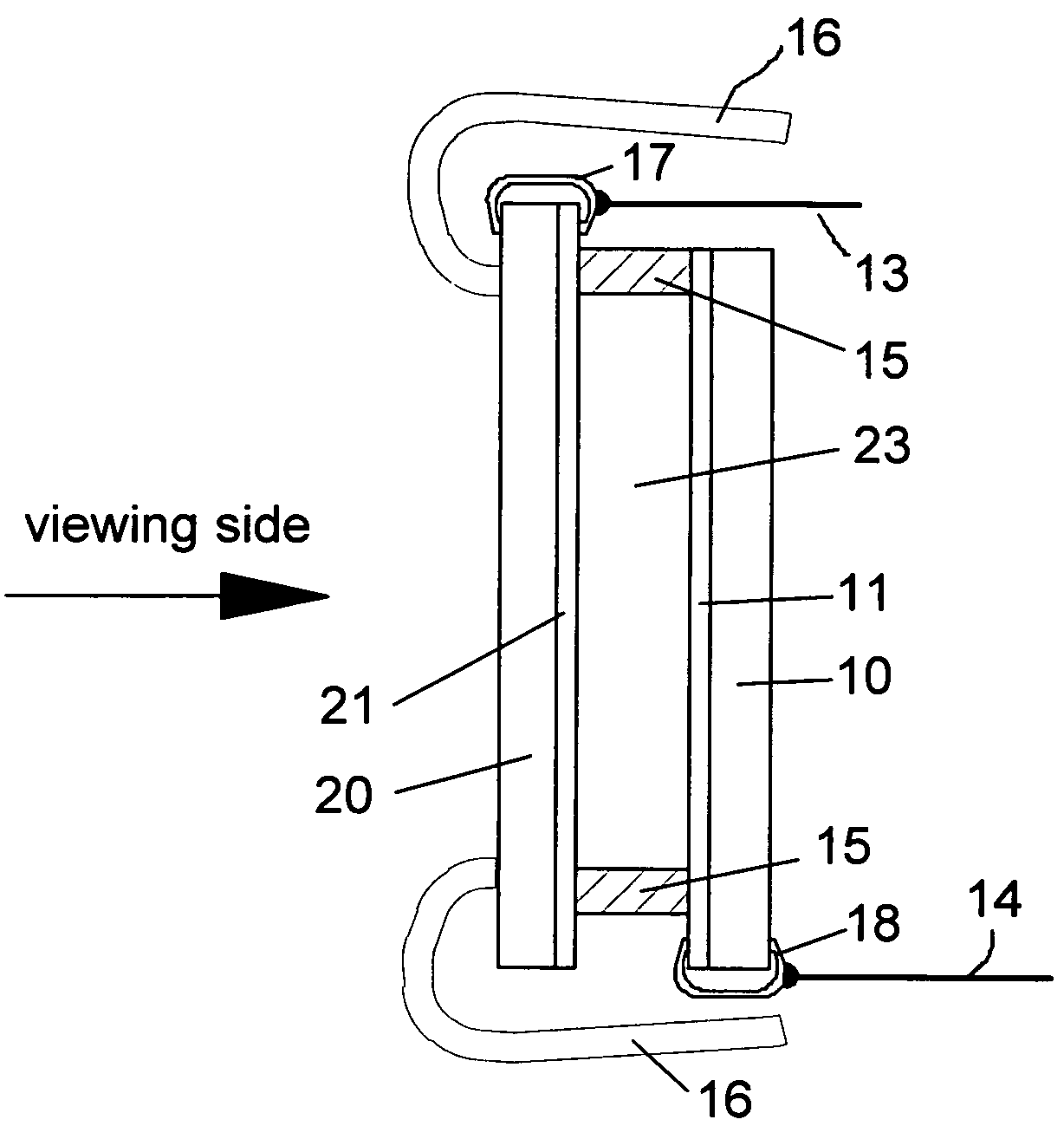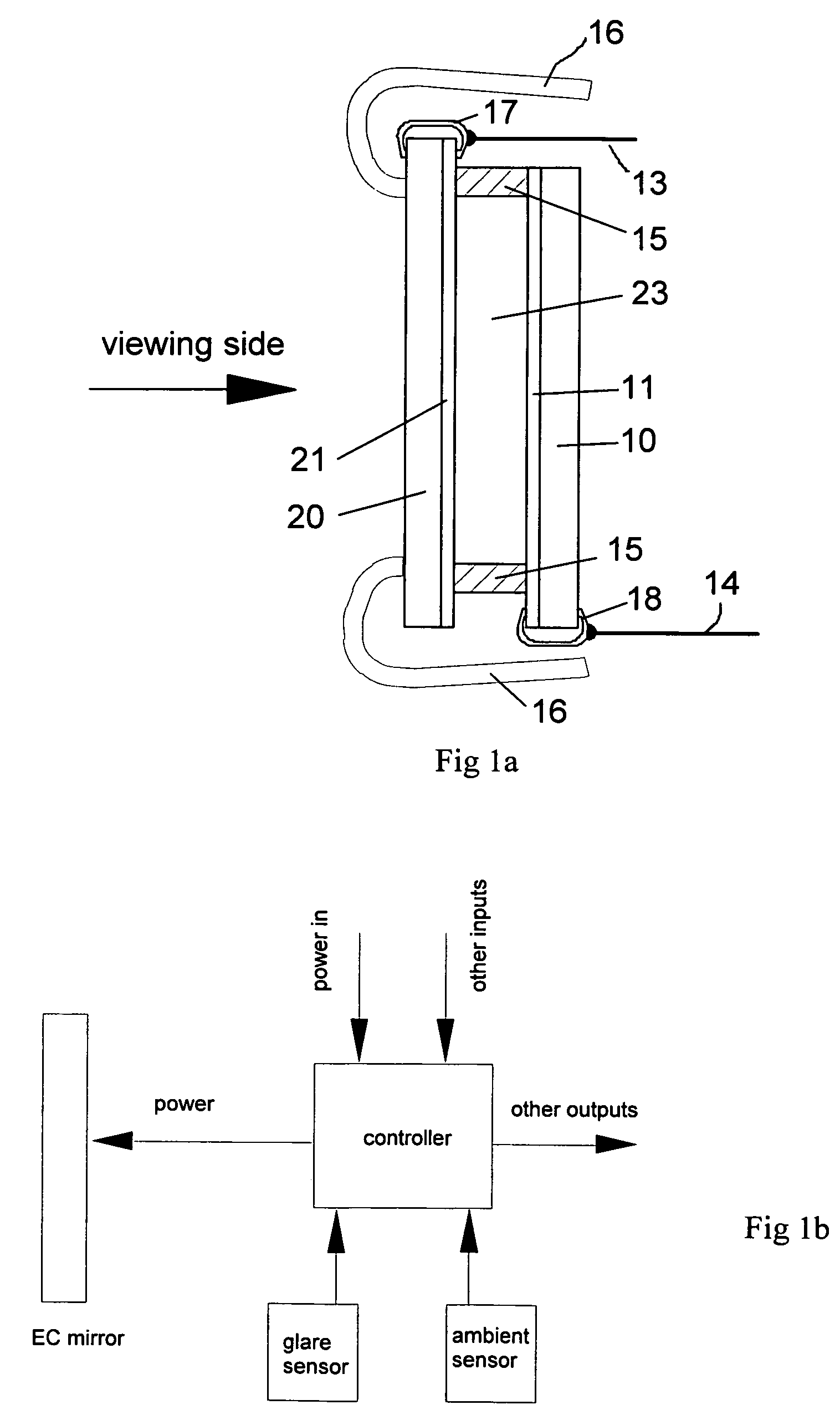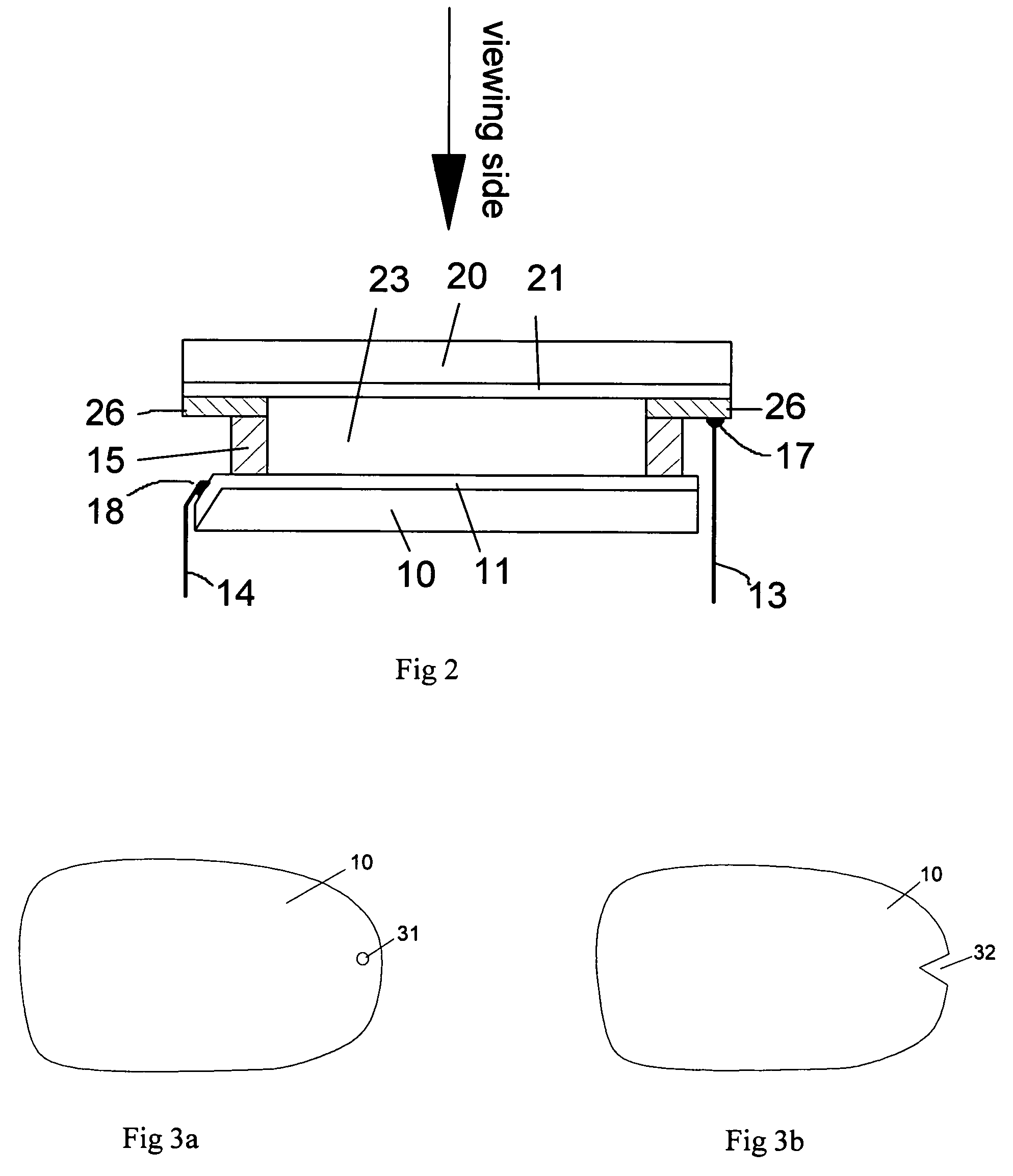Environmentally safe electrochromic mirrors
an electrochromic mirror and mirror technology, applied in the field of environmental protection, can solve the problems of affecting the appearance of the car interior or exterior coating and paint, and achieve the effect of protecting environmental pollution
- Summary
- Abstract
- Description
- Claims
- Application Information
AI Technical Summary
Benefits of technology
Problems solved by technology
Method used
Image
Examples
embodiment 1
Low Toxicity Mirrors
[0017]With the increased numbers of variable reflectance mirrors being used, there is a correspondingly increased desire to provide an environmentally improved variable reflectance mirror design. Millions of mirrors are being produced annually that incorporate variable reflectance elements with the above mentioned components. As an example U.S. Pat. No. 6,899,437 addresses this issue and this patent is herein incorporated in its entirety by reference. As discussed below this patent recognizes heavy elements such as cadmium, mercury and lead and some compounds having chlorine, bromine and antimony as threats to the environment. However, this does not recognize threats caused by beryllium.
[0018]Although all commercial mirrors, particularly single compartment (liquid or solid electrolyte) do not contain all of these known hazards, but all of these use busbar clips that use beryllium as one of its components. Some of the hazardous contaminants may come from photocell...
embodiment 2
Low Viscosity Electrolytes
[0027]Solid electrolytes for mirrors and other EC devices are disclosed in several patents. For example U.S. Pat. Nos. 5,300,374, 5,910,854, 5,928,572 disclose EC devices with solid electrolytes which are formed by cross-linking the electrolyte after the device is filled with the electrolyte comprising monomers, typically using backfilling as described in U.S. Pat. Nos. 5,140,455 and 6,853,472. U.S. Pat. No. 6,639,708 discloses electrolytes which are laminated in a sheet form between the two substrates, and published US patent application 2004 / 0233537 discloses electrolytes that form solid upon cooling by formation of multiphase system. US patent application 2004 / 0233537 is herein incorporated in its entirety by reference. This method involves heating the electrolyte above its melting point and then injecting this into a pre-formed cavity formed by the two coated substrates. One may use several ways of injecting the electrolyte under pressure, and one of su...
example 1
Preparation and Characterization of Solid Electrolyte E1
[0033]A solid electrochromic electrolyte was prepared by combining under nitrogen 1.0 gram of a copolymer of vinylidene fluoride and hexafluoropropylene, supplied by Solvay (Thorofare, N.J.) under the trade name Solef 20615 / 1001, with 10 milliliters of propylene carbonate while stirring at 130° C. for one hour. The mixture was cooled to room temperature and 0.3834 g (0.039 molar solution) of the electrochromic dye Fc-Vio imide (1-(4-Ferrocenylbutyl)-1-methyl-4-bipridinium and 1,1,1-trifluoro-N-[(trifluoromethyl)sulfonyl]-methanesulfonamide salt) added under nitrogen atmosphere. Fc-Vio imide is a dye which has an anodic moiety (ferrocene) which is covalently linked to a cathodic moiety (viologen cation) and the anion is imide. The mixture was heated to 100° C. for one hour while stirring to form a complete solution. The electrolyte was degassed under vacuum for 10 minutes at 100° C. and when cooled to room temperature was a soli...
PUM
| Property | Measurement | Unit |
|---|---|---|
| viscosity | aaaaa | aaaaa |
| thickness | aaaaa | aaaaa |
| thickness | aaaaa | aaaaa |
Abstract
Description
Claims
Application Information
 Login to View More
Login to View More - R&D
- Intellectual Property
- Life Sciences
- Materials
- Tech Scout
- Unparalleled Data Quality
- Higher Quality Content
- 60% Fewer Hallucinations
Browse by: Latest US Patents, China's latest patents, Technical Efficacy Thesaurus, Application Domain, Technology Topic, Popular Technical Reports.
© 2025 PatSnap. All rights reserved.Legal|Privacy policy|Modern Slavery Act Transparency Statement|Sitemap|About US| Contact US: help@patsnap.com



